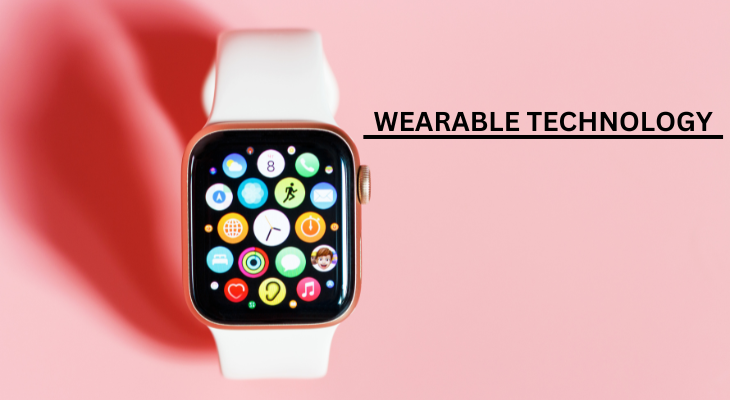Unlocking Wearable Technology:Potential to Transform Fitness, Health, and Other Fields

Table of Contents
ToggleIntroduction:
Wearable technology has become a powerful tool that fits into our daily lives easily in this day and age. These devices, which range from fitness trackers to smartwatches, have completely changed how we keep an eye on our health, stay in touch, and increase productivity. We go into the realm of wearable technology in this thorough introduction, examining its features, advantages, and effects on several facets of our lives. Accepting the wearable revolution marks a turning point in how we interact with technology and how we incorporate it into our daily lives. Wearables provide a doorway to a more efficient and connected life, from augmented reality glasses that enhance our experiences to smartwatches that track our fitness objectives. In addition to being convenient, these gadgets give us incredibly useful information about our surroundings, behaviors, and overall health. Accepting this change entails accepting the possibility of increased output, better health results, and richer experiences. We are laying the groundwork for a time in the future when technology will become an extension of who we are, improving our capacities and bringing new dimensions to our lives that we cannot yet fully comprehend.
Understanding Wearable Technology:
Evolution of Wearable Devices: This section examines the development of wearable technology and the significant turning points that have influenced it, following the path from crude prototypes to complex devices.
Components and Features:
By dissecting wearable technology, we are able to identify the fundamental parts and characteristics that give these gadgets their functionality. Realizing the potential of these devices requires an understanding of their building components, which include anything from CPUs and sensors to displays and networking possibilities. An in-depth analysis of wearable technology’s features and complexity is necessary to comprehend it. The term “wearable technology” refers to a broad range of gadgets that are intended to be worn on the body and blend in naturally with daily tasks. These devices are changing the way we engage with technology, from augmented reality glasses that allow hands-free information access to smartwatches that track health parameters. Wearable technology provides ease, efficiency, and improved user experiences by combining sensors, connection, and processing power into small, portable forms. In addition, the fusion of technology and fashion has accelerated the creation of fashionable wearables that complement individual styles. But as wearable technology develops further, significant concerns about data security, privacy, and the impact on society as a whole are brought to light. For a thorough grasp of wearable technology’s revolutionary potential and ethical issues, it is imperative to investigate these subtleties.
The Impact of Wearable Technology
- Health Monitoring: The ability to check vital signs like heart rate, blood pressure, and sleep patterns in real-time thanks to wearable technology has completely changed how we monitor our health. This section examines the ways in which these devices enable people to take charge of their health and make wise decisions.
- Fitness Tracking: Wearable technology may be a useful tool for anyone beginning or continuing their fitness journey. It can be used to track activity levels, create goals, and track progress. These devices provide information on anything from step counts to caloric expenditure that promotes accountability and incentive.
- Chronic Disease Management: The use of wearable technology in the treatment of long-term conditions like diabetes, high blood pressure, and asthma is growing. These devices help patients and healthcare practitioners better manage their diseases and achieve better results by continuously monitoring important variables and sending out timely alerts.
Beyond Fitness and Health: Examining Various Uses
- Enhancement of Productivity: Wearable technology has a big impact on increasing productivity in addition to health and fitness. These devices enable people to operate more effectively and intelligently, from wearable cameras that record documentation hands-free to smartwatches that simplify communication.
- Augmented Reality: Wearables with augmented reality (AR), like smart glasses, are opening up new opportunities across a range of industries, including manufacturing, logistics, healthcare, and education. This section looks at how augmented reality (AR) technology is improving training, streamlining workflows, and opening up new creative opportunities.
- Fashion and Lifestyle: With the emergence of stylish wearable technology, fashion and function come together like never before. This section explores the convergence of fashion and technology, showcasing customisable fitness trackers and designer smartwatches as indispensable fashion accessories.
Challenges and Considerations in Wearable Technology Adoption
- Privacy and Data Security: With wearable technology gathering so much personal data, privacy and data security are major concerns. This section looks at the possible dangers of wearable technology and the precautions that should be taken to protect user data.
- Interoperability and Integration: These two issues have grown in importance as the ecosystem of wearable technology and platforms becomes more varied. The significance of standardization and seamless connectivity in guaranteeing a consistent user experience across various devices and applications is discussed in this section.
- User Experience and Design: These two factors are critical to the success of wearable technology. The role that user adoption and happiness are driven by features including comfortable form factors, long-lasting battery life, and intuitive interfaces is covered in this section.
Future Trends and Innovations in Wearable Technology
Healthcare Wearables: With developments in customized medicine, remote patient monitoring, and predictive analytics, the field of wearable technology in healthcare has a bright future ahead of it. This section looks at the new ideas and trends that have the potential to completely change the healthcare industry.
Wearable AI Assistants: As artificial intelligence develops further, wearable AI assistants becoming more complex, offering proactive support, individualized recommendations, and contextual insights based on user preferences and actions.
Wearable artificial intelligence: (AI) assistants are transforming how people engage with information and tasks by fusing cutting-edge technology with everyday ease. These small but mighty gadgets fit in perfectly with our everyday activities, offering us individualized insights and on-demand support in real time. Wearable artificial intelligence (AI) assistants provide users with rapid access to information, communication, and support wherever they go, from smartwatches that measure health data to augmented reality glasses that improve productivity. These assistants adjust to each user’s unique preferences and habits through sophisticated machine learning algorithms and natural language processing, continuously improving their capabilities to better support their users. Wearable AI assistants portend a future in which technology not only follows us but actually enhances our talents in meaningful ways, perhaps streamlining processes, improving decision-making, and improving general quality of life.
Wearable Ecosystem Integration:
As wearables come together with other smart technologies—like connected automobiles, smart homes, and Internet of Things devices—they are forming a smooth, networked ecosystem in which information moves across devices without interruption, opening up new possibilities for automation and customization. The term “wearable ecosystem integration” refers to the smooth combination of different wearable devices with other smart technologies and with one another, forming a coherent network that improves functionality and user experience. Smartwatches, fitness trackers, augmented reality glasses, and even smart clothes are all included in this integration. Users can benefit from increased convenience and efficiency in managing chores, obtaining information, and keeping an eye on their health by syncing data and functions across different devices. Furthermore, wearables can contribute to broader contexts like home automation or remote patient monitoring by integration with other smart ecosystems, including smart homes or healthcare systems. In addition to simplifying daily tasks, this interconnection creates opportunities for personalized services and insights from the collection of data from many devices. As wearable technology develops further, seamless integration into its ecosystem has the potential to completely change how we use and engage with these gadgets on a daily basis.
Conclusion:
Wearable technology has advanced past its initial novelty to become an essential tool that improves our general well-being, productivity, and physical fitness. Wearable technology has the ability to revolutionize entire sectors and give people unprecedented power as innovation and technology progress at an accelerated rate. We can fully utilize these devices to live healthier, more connected, and more productive lives if we embrace the wearable revolution and keep up with the most recent innovations. So Much More Our lives have been completely changed by wearable technology, which provides connectivity, convenience, and customized experiences. These gadgets, which range from smartwatches to fitness trackers, enable users to live happier, healthier lives. The future of wearable technology is brighter than ever, with even more creative ways to improve daily living promised by ongoing technological and design breakthroughs.
FAQs About Wearable Technology
Can You Use Wearable Technology Safely?
In general, wearable technology is safe to use. It is imperative, therefore, to go by the manufacturer’s instructions and utilize them sensibly. It’s important to recognize and control the dangers connected with wearable technology because some gadgets, like those with built-in GPS, may raise privacy problems.
How Much Time Do Batteries for Wearable Devices Last?
The kind of wearable gadget and usage habits affect battery life. The majority of fitness trackers and smartwatches have a battery life of one to several days between charges. The brightness of the screen, connectivity, and the use of services like GPS can all affect how long a battery lasts.
Can Smartphones Be Replaced by Wearable Technology?
Although they serve many of the same purposes as smartphones, wearable technology isn’t meant to completely replace them. Wearables are a great addition to smartphones since they offer easy access to important functions and data while on the road. Smartphones are still necessary, though, for tasks that call for a larger screen or more capability.
Are Waterproof Wearable Electronics?
Numerous wearable gadgets have variable degrees of waterproofness or water resistance. To understand each device’s water resistance rating and restrictions, it is important to consult the manufacturer’s specifications. Some gadgets are appropriate for swimming and water activities, while others may survive splashes and brief submersion in water.




